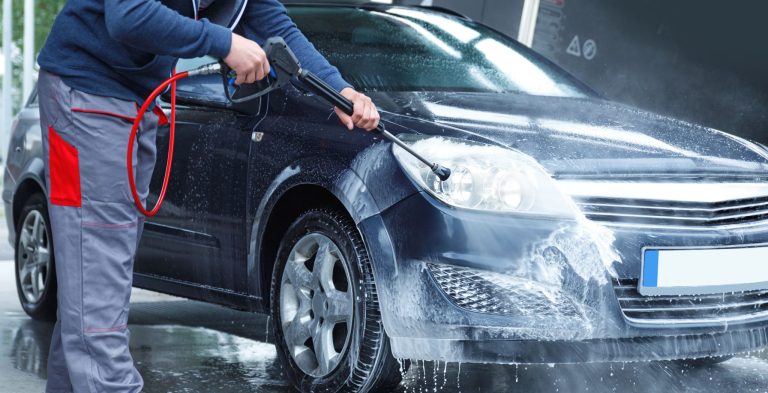Maintaining an EV: Common Parts That May Need Replacement Over Time

Key Takeaways
- Explore which electric vehicle (EV) components may require attention to maintain peak performance.
- Understand the typical lifespan and replacement schedules of vital EV parts.
- Learn proactive maintenance practices that ensure reliability and safety for your EV.
Introduction
Electric vehicles (EVs) are at the forefront of a transportation revolution, offering a greener, more efficient alternative to traditional gasoline-powered cars. Their appeal lies not only in their minimal environmental impact but also in their reduced need for maintenance, thanks to their simplified mechanical architecture. However, even with fewer moving parts, maintaining an EV still requires diligence to ensure that all components function effectively over time. This article explores standard parts that might need replacement in an EV, providing insights into proper maintenance to extend the life and reliability of your electric vehicle.
EV Parts: The Role of Other Electrical Components
Beyond the core systems, other electrical components, such as high-voltage cables, inverters, and onboard chargers, require standard maintenance routines. EV parts critical to vehicle functionality must be inspected regularly for wear and tear. These components collectively contribute to the vehicle’s efficient performance and user convenience. Addressing minor issues in these systems proactively can prevent more significant failures, ensuring your EV remains reliable. Investing time in inspections and professional upkeep can save considerable effort and costs in the long term.
Battery Health and Maintenance
The battery is the most critical component in an EV, acting as both the power source and the primary range determinant. Modern EV batteries are engineered to last between 100,000 and 200,000 miles, but several factors can influence their longevity. Environmental conditions such as extreme temperatures and discharging habits significantly affect battery degradation. Regular battery health assessment through diagnostic tools or professional services helps identify potential issues before they escalate. Proactive measures include optimizing charging routines—aiming for an 80-90% charge to prevent overcharging—and keeping the vehicle in a garage to protect it from severe weather conditions. These practices can significantly extend battery life, delaying the expensive prospect of battery replacement.
Tires: Ensuring Proper Traction and Efficiency
EVs are typically heavier than their internal combustion engine counterparts, resulting from substantial battery packs. This added weight can accelerate tire wear, making regular tire maintenance crucial. Checking tire pressure frequently ensures optimal efficiency, as inadequate pressure increases rolling resistance and energy consumption. Moreover, routine tire rotation and alignment inspections help maintain even wear and improve longevity, savings that add up over time. Well-maintained tires enhance vehicle range and contribute significantly to safety and driving comfort.
Brake Systems: Benefiting from Regenerative Braking
Regenerative braking systems in EVs present a unique advantage, redirecting kinetic energy back into the battery, thus reducing wear on brake components like pads and rotors. Despite this innovative technology, regular brake inspections remain necessary to ensure they function correctly when needed in emergencies. A smooth functioning brake system assures safety by delivering the performance required in critical situations, thus providing peace of mind on every journey. It’s also worth noting that the cost-effectiveness of regenerative braking systems becomes more pronounced over time as traditional wear and tear are minimized.
Electric Motor Maintenance
The electric motor in an EV is quieter, cleaner, and typically demands less maintenance than combustion engines. Its durability stems from fewer moving parts, yet maintaining a cooling system for the motor remains imperative to prevent overheating. Motor components can degrade faster without proper cooling, leading to performance issues. Regularly checking coolant levels and ensuring the electrical connections remain intact can prevent potential malfunctions, safeguarding the significant investment in these crucial components. The longevity and reliability offered by a well-maintained electric motor translate into a smooth and efficient driving experience, which is fundamental for the long-term satisfaction of EV ownership.
Suspension Systems: Managing Increased Weight
Handling an EV’s added weight due to the battery requires a robust suspension system. The suspension components, such as shocks and struts, absorb road imperfections and provide a comfortable ride, yet they undergo significant stress. Regular inspections ensure they remain in optimal condition, preserving ride quality and vehicle handling. Replacing worn-out components enhances comfort and safety and prevents undue stress on other vehicle parts, maintaining the car’s overall structural integrity. Managing the suspension system efficiently ensures that your EV delivers a stable and enjoyable driving experience.
Cabin and Climate Systems
While the focus often lies on performance-related components, maintaining the interior systems of an EV is equally essential for driver satisfaction. The climate control system, for instance, should be regularly serviced to effectively regulate cabin temperature without overburdening the battery. Cabin air filters should be replaced periodically to ensure air quality, and software updates for infotainment systems are essential to keep electronic interfaces operating smoothly. A well-maintained cabin system contributes to a pleasant driving environment, making each journey enjoyable and comfortable.
General Maintenance Tips for Longevity
To keep an EV in prime condition, it is prudent to take a proactive approach to maintenance. Following a comprehensive maintenance schedule that considers all vehicle aspects, from electrical systems to mechanical components, is crucial. Regular consultations with certified EV technicians and an informed understanding of the vehicle’s needs prepare you to handle maintenance effectively. This vigilant approach maximizes performance and efficiency and extends the vehicle’s life span, highlighting the advantages of sustainable electric driving.
Conclusion
While electric vehicles inherently simplify certain maintenance aspects due to their design, understanding and addressing their specific requirements is vital for optimal performance. Routine checks and the correct maintenance strategy are key to maximizing your EV investment, ensuring the blend of innovation and sustainability continues to offer a reliable and rewarding experience. By staying informed and proactive, EV owners can enjoy the myriad benefits of electric driving and contribute to a cleaner, more sustainable future.






